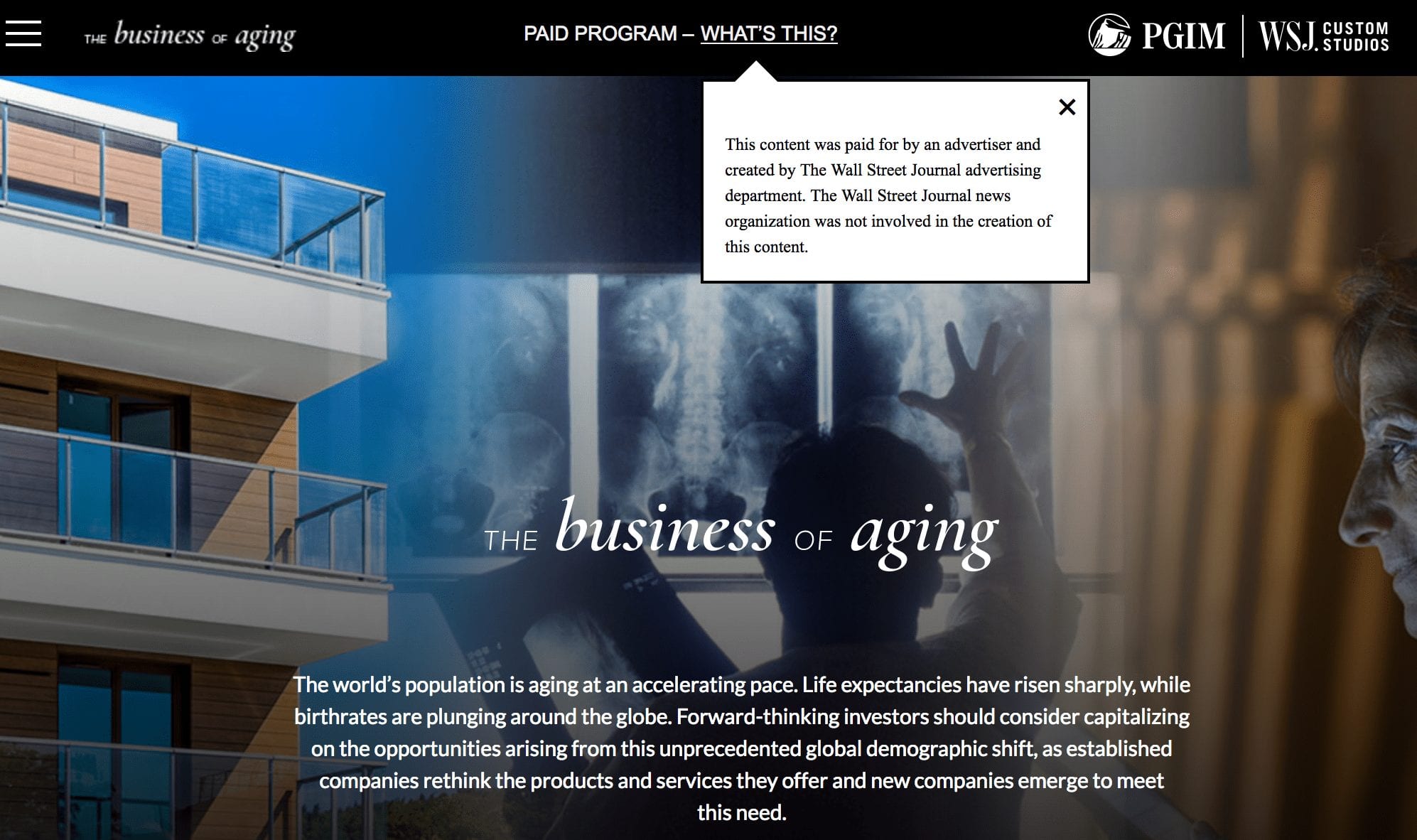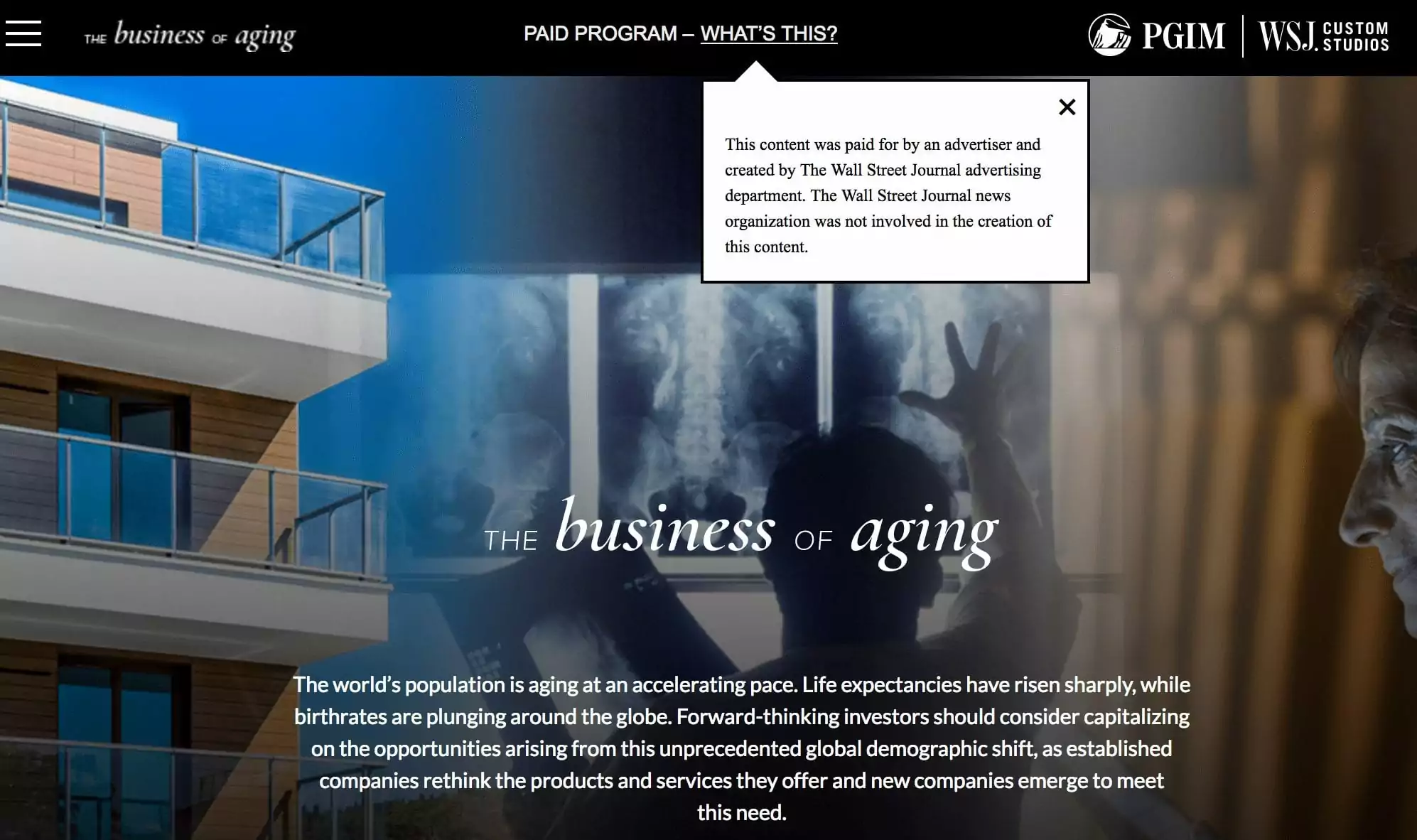- 30-day money-back guarantee
- No contract or commitment required
- Special promo: AARP and Military Veterans get one month FREE!
No contract or commitment required

We at UnaliWear would like to thank all the parties involved to include us as a mention in the Wall Street Journal in the article: “The Business of Aging”. You can read the complete article here: http://partners.wsj.com/pgim/the-business-of-aging/
 By 2030, the number of Americans over the age of 65 is expected to top 70 million, according to the U.S. Census Bureau. For investors, one of the biggest challenges will be understanding the implications of where and how those millions of people will live. Historically, as people aged they moved to assisted-living communities and long-term care facilities. But in the next 20 years, researchers predict the aging population will have different requirements for how they live.
By 2030, the number of Americans over the age of 65 is expected to top 70 million, according to the U.S. Census Bureau. For investors, one of the biggest challenges will be understanding the implications of where and how those millions of people will live. Historically, as people aged they moved to assisted-living communities and long-term care facilities. But in the next 20 years, researchers predict the aging population will have different requirements for how they live.
For example, as seniors begin to outnumber younger generations, industry watchers expect to see an exponential increase in demand for senior housing as the need for such developments as student housing, shared rental units and first homes declines. In fact, Census Bureau analysts expect that U.S. home ownership rates will continue to decline from their peak in 2005 of 69.1 percent as younger generations opt for apartments and shared living spaces over buying a home. The real estate industry is responding to this shift with greater focus on accessible retail locations, home working environments and less traditional retirement communities.
…
Technology is already changing how health care is accessed and delivered. Tablets and hand-held computers are standard features in examination rooms today, giving doctors and other health care professionals immediate access to patient history, lab results and current medications to help diagnose and treat patients more quickly and efficiently. And most medical practices already offer online patient portals, providing users access to all their records.
Looking ahead, though, health care technology companies that cater to the aging population are one of the predicted areas for potential investment opportunity. The aging effect will cause annual spending on home health care by seniors to balloon by almost $90 billion by 2070, according to an analysis commissioned by PGIM, the investment management unit of Prudential, and conducted by Oxford Economics. Spending on medicine and drugs, meanwhile, will climb by more than $40 billion annually over the next 50 years.
The so-called “Silvertech” market has spawned hundreds of new startups in recent years, attracting tens of millions of dollars in seed capital from venture capital investors and crowdfunding Internet sites. Most of today’s innovations are focused on technology that helps seniors remain in their homes for as long as possible, says Laurie Orlov, an analyst and founder of “Aging In Place Technology Watch,” an online newsletter. “Home care is really hot right now,” she says. “It’s one of the booming job categories, and we are seeing more companies entering the market with tech-enabled home care.”
…
Sensors are also garnering heightened attention from the capital markets as companies repurpose existing technology to fit the growing needs of seniors. The ubiquitous wristbands sported by fitness fanatics and health-conscious people are now beginning to connect the health and fitness data they collect with health care providers.
While seniors probably don’t need to track the intensity of their workouts, the data collected by the sensors can provide critical information to caregivers. UnaliWear, an Austin-based startup, funded its Kanega Watch with a Kickstarter campaign. A self-contained unit that doesn’t require a phone or Internet connection, Kanega is a voice-activated system that can detect falls or long stretches of inactivity and ask the wearer if he or she is OK. If there is no response, the watch can call for help and alert caregivers. GPS functions track wearers’ movements and can help them find their way home if they are lost.
Our mission is to extend independence with dignity for millions of vulnerable people. Read more
©2015-2024 UnaliWear Inc.
UnaliWear’s RealFall™ Fall Detection and additional proprietary technology are protected by the following US and International Patents: US Patent 10,051,410 and US Patent 10,687,193 * Mexico Patent 363492 * Australia Patent 2014321303 * Japan Patent 6346953 * China Patent 105765639 * European Patent 14845754 * Israeli Patent 244489 * Canada Patent 2,923,745

All AARP members and Military Veterans receive a free month added onto the end of the first year of service (offers cannot be combined). Simply indicate your appropriate status in the Referral/Promo box during checkout or mention it when ordering over the phone (888-343-1513).
UnaliWear’s patented RealFall™ technology is based on actual fall data from Kanega Watch wearers and gets smarter about each wearer’s personal movements over time— continuously improving fall detection accuracy and limiting/eliminating false alerts. No other medical alert system offers this real fall/related movement learning and continuous improvement technology. Click here to learn more.